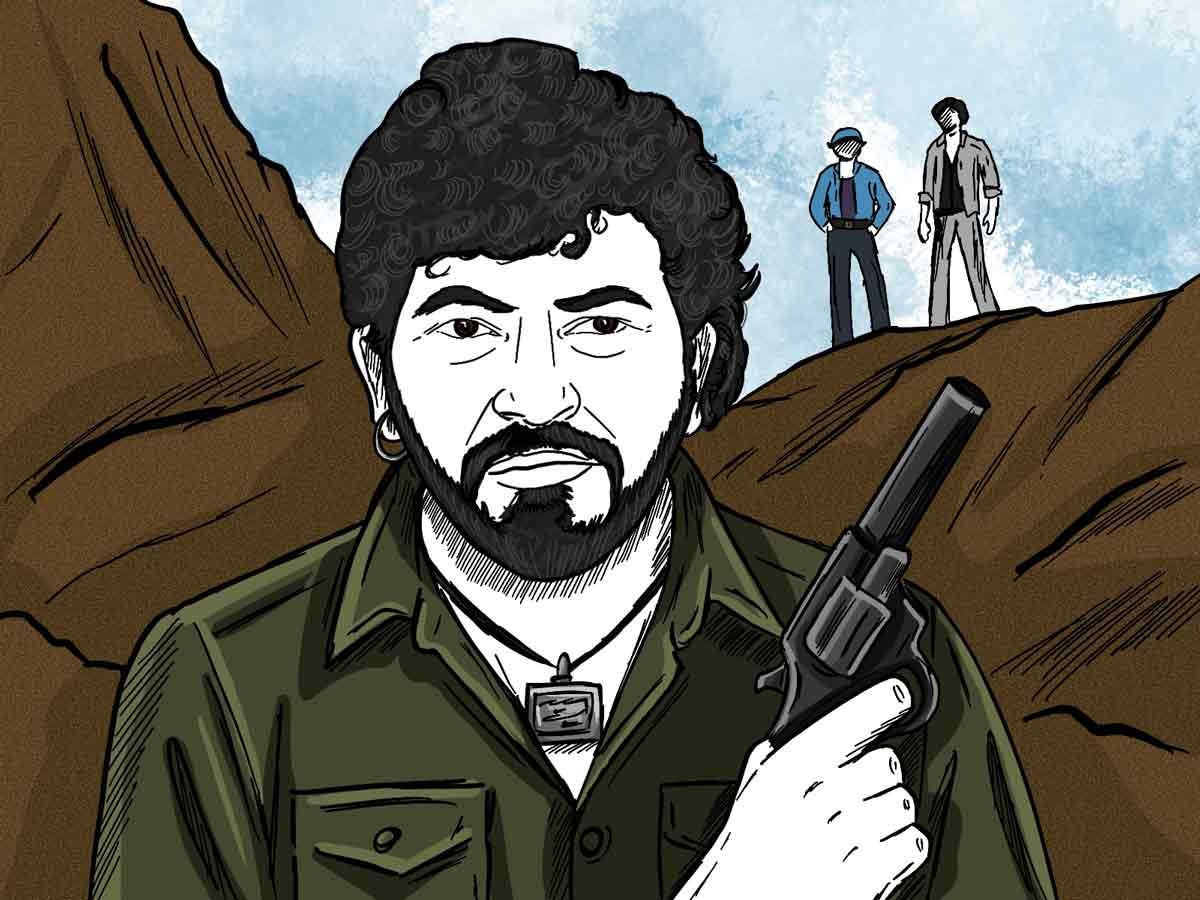
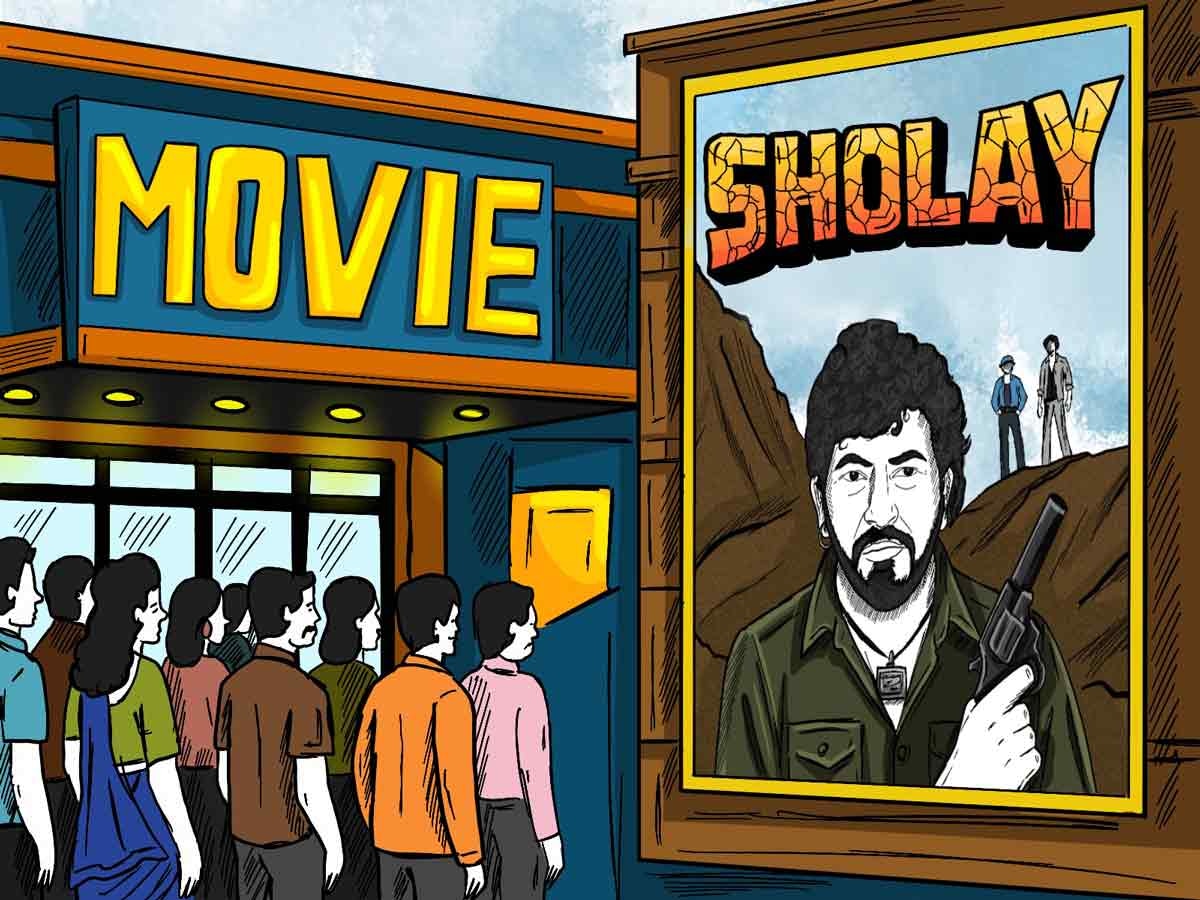
On August 15, 1975, Sholay lit up Indian theatres, igniting a cultural fire that burns bright even today. To celebrate its golden jubilee, we revisit the legacy of the masterpiece, exploring the stories, struggles, and serendipity behind its creation. In part two , we journey back to 1973, to a smoky room in Bombay, where a young director’s vision and a newcomer’s grit gave birth to Bollywood’s greatest villain: Gabbar Singh. You can read part one here : Sholay@50: The film that died at birth to live forever
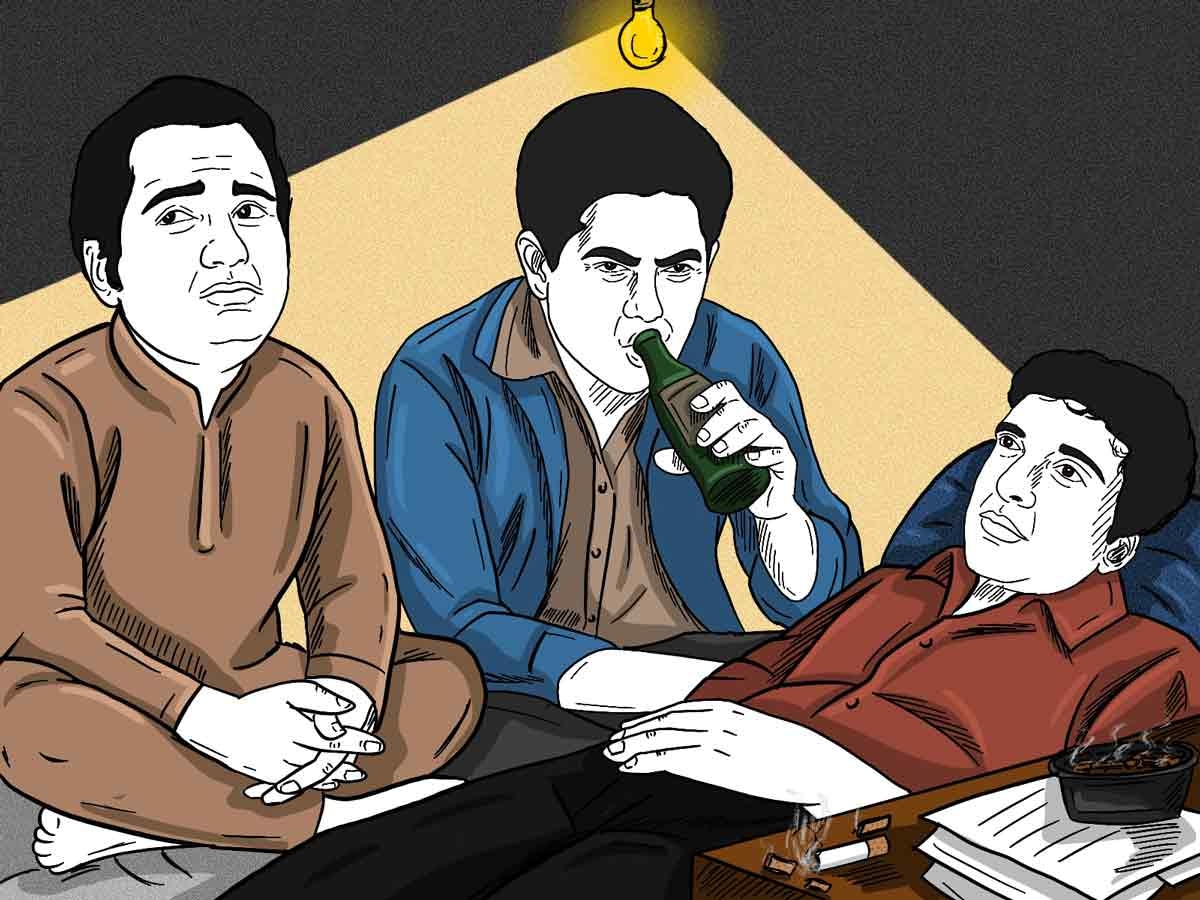
The thud of footsteps grew louder. Inside Sathe House, in a Bombay suburb, director Ramesh Sippy waited impatiently.
“Kitne aadmi hain?” Sippy’s eyes darted toward Salim Khan, who was nursing a beer while poring over a sheet of paper.
“Ek, Ramesh,” Khan said moodily, feeling the smooth liquid flowing down his gullet. Sprawled beside him, his co-writer Javed Akhtar stared at the ceiling, churning a plot point in his mind, twirling a pen.
The year was 1973, and the script of Sholay was taking shape under the meticulous pens of Salim Khan and Javed Akhtar, the dynamic duo behind some of Bollywood’s most iconic stories. The character of Gabbar Singh, a ruthless dacoit with an unforgettable swagger, was the linchpin of their ambitious vision—a film that would blend raw action, drama, and emotion into a cinematic epic. But finding the perfect Gabbar was proving to be a challenge.
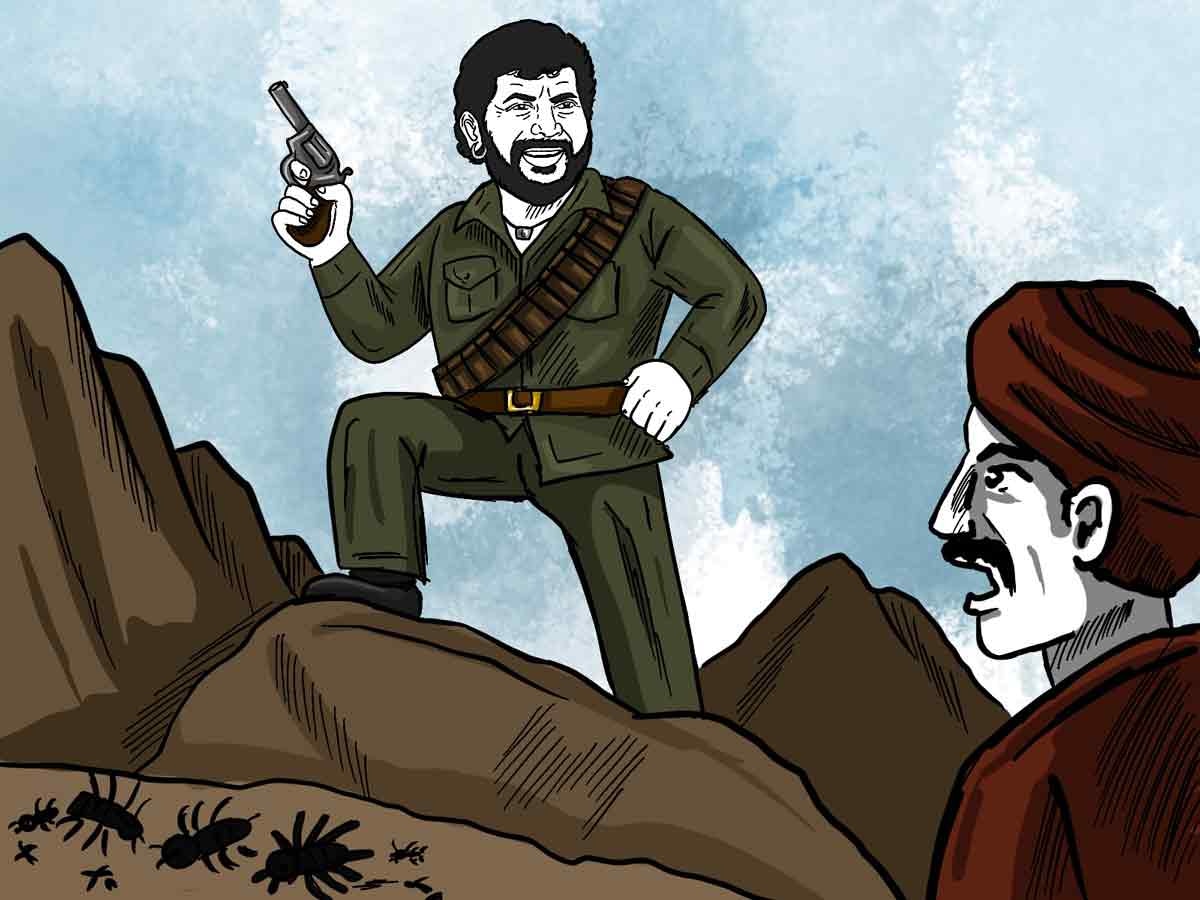
The Elusive Dacoit
Sippy’s original choice, Danny Denzongpa, had backed out at the last minute because of a scheduling clash. Danny, the athletic actor from Sikkim, had committed to shooting Feroz Khan’s Dharmatma, inspired by The Godfather, in Afghanistan, throwing Sippy’s project into disarray.
Amitabh Bachchan and Sanjeev Kumar showed interest but were denied. For a while, Sippy, 27, considered casting Prem Nath, Raj Kapoor’s brother-in-law and an established actor, as Gabbar. But the veteran actor had a reputation for being eccentric and difficult, prompting Sippy to abandon the idea. So, the search continued.
“What you seek is seeking you,” observed the 13th-century Persian poet and Sufi mystic Jalaluddin Rumi. Amjad Khan, a Pathan with a scholarly bent of mind, was to discover this soon.
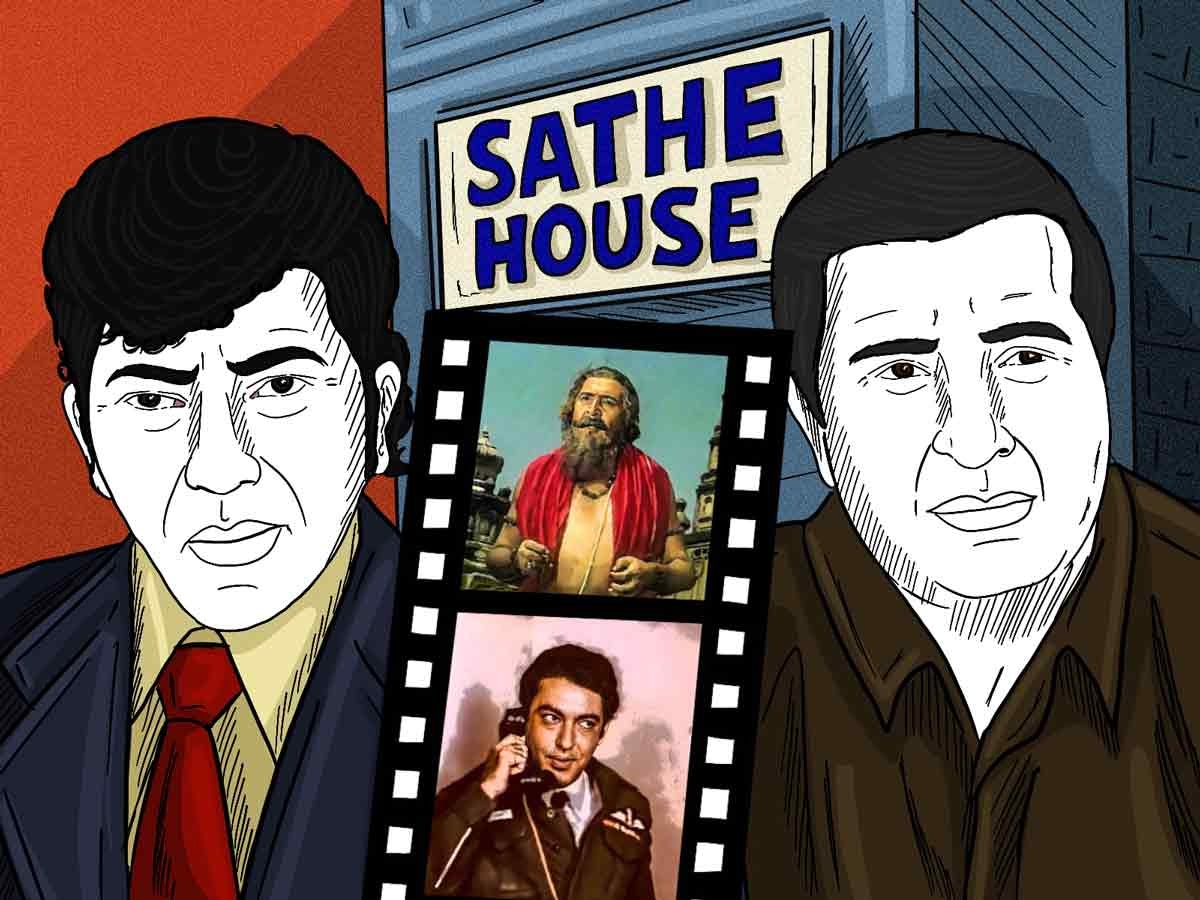
The Pathan from Peshawar
Zakaria Khan, a Pashtun from Peshawar, is known by his screen name Jayant. For nearly three decades until his death in 1975, Jayant was a prominent Indian character actor renowned for his commanding screen presence, dignified demeanor, and deep voice. His portrayal of Bhawani Prasad, a thug masquerading as a Varanasi priest in the cult classic Sunghursh (1968), had sent shivers down the spines of viewers, establishing him as a menacing presence on the screen.
His son Amjad Khan followed him into acting, but success eluded him in the early years. His only role of significance was as a Pakistani pilot in Chetan Anand’s Hindustan Ki Kasam, based on the 1971 war. During this phase of struggle, he bumped into Salim Khan, Jayant’s friend, who promised to introduce him to Sippy. “If you get the role, it will change your life,” the writer told the young actor.
A few days later, Salim Khan told Sippy he had someone in mind for Gabbar’s role. “Fresh but talented,” the writer said, based on his assessment of Amjad as a stage actor.
“Let’s call him to Sathe House,” replied Sippy. And, thus, Amjad had a tryst with destiny.
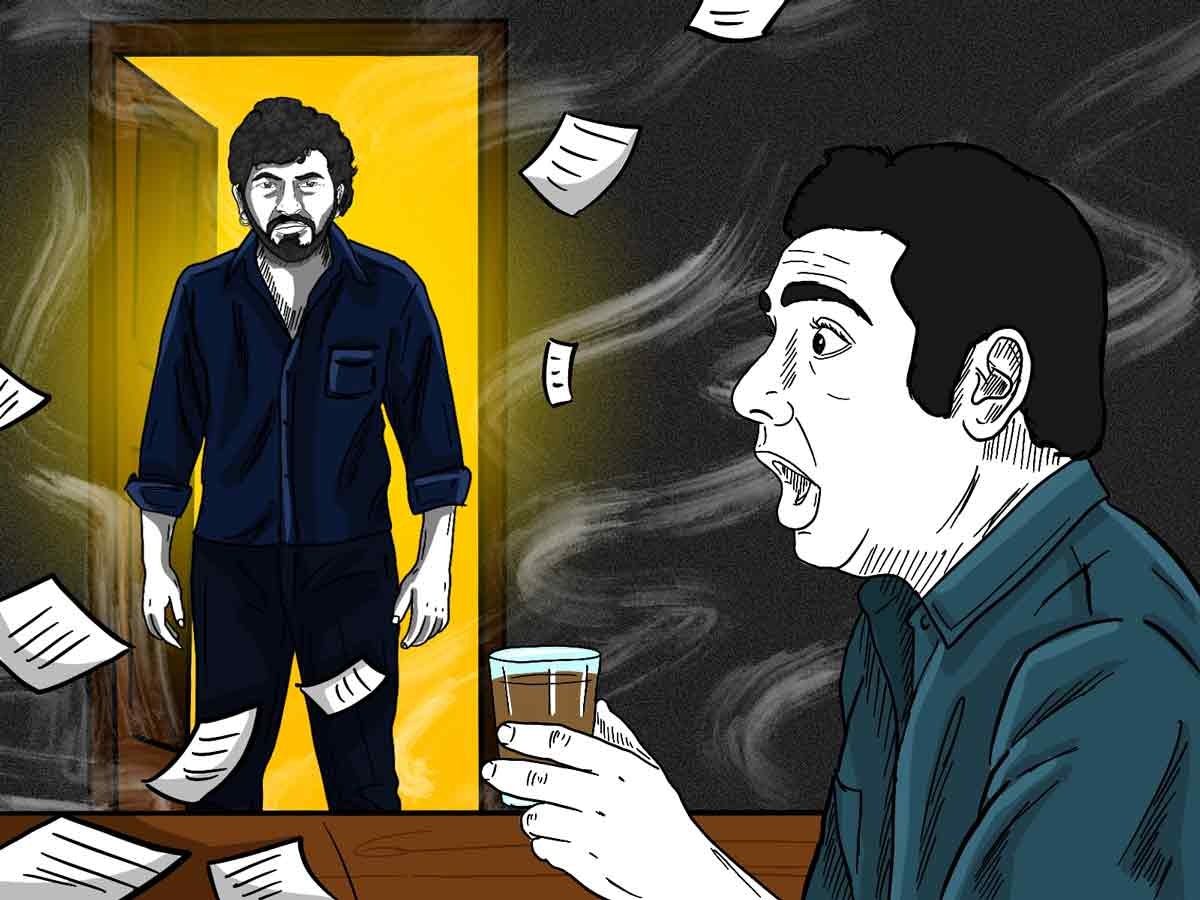
Love at First Sight
At Sathe House, the door creaked open, letting in a gust of wind. Salim-Javed continued to scribble, Sippy’s pulse quickened.
“Tasleem,” a faint voice crackled. Sippy’s glance fell first on the feet—strong and a bit bulky—and then ascended to the face, skidding off the sturdy frame. Sippy’s fingers tightened around the rim of a glass of cutting-chai. His breath grew heavy with expectation.
“This is my Gabbar,” he whispered to himself, fervently hoping.
The crew’s reaction to Amjad, however, was tepid, primarily because of his voice. “Too light for a dacoit, won’t work,” the skeptics said. “Let’s dub him,” others suggested.
Sippy, however, saw something in Amjad that others had overlooked. It wasn’t just his imposing physique, which seemed tailor-made for on-screen terror. It was the glint in his eyes—a mix of mischief and danger—that convinced Sippy he had the X factor. “Amjad had an intensity,” Sippy later recalled, “a raw energy that could make the audience fear him and love him at the same time.”
The audition was a turning point. “Yeh haath humko de de, Thakur” he growled, and the words seemed to leap off the page. This was no ordinary actor; this was Gabbar Singh incarnate. But, a quirk of fate loomed.

Jo Darr Gaya, Samjho Marr Gaya
The shooting began in Ramanagaram, a ragged village near Bangalore. One morning, Amjad flew from Bombay, held aloft by the wings of hope and optimism, to join the cast and crew. A few minutes after take-off, the plane returned to Bombay: its hydraulic system had failed.
His wife Shehla Khan later told a magazine that Amjad waited for the crew to fix the glitch. Not willing to reschedule the departure, he boarded the same plane after four hours.
On reaching Bangalore, Amjad developed a fever thinking of what could have happened had the aircraft failed again. “He had a two-month-old baby back home. He had taken this risk fearing that if he didn’t reach the shoot, Danny Denzongpa would’ve been roped in,” Shehla Khan told Filmfare.
Opportunity is fleeting, fear can’t deny him a shot at the role, Amjad knew. As Gabbar was to say later for generations to remember: “Jo Darr Gaya, Samjho Marr Gaya!”
Despite Sippy’s conviction, casting Amjad was a gamble. Even Amjad battled self-doubt and insecurity, fearing he might mess it up. His first few days on the sets were a disaster. He fumbled with lines, stumbled in front of the camera. But, encouraged by Sippy, Amjad began settling into the role.
On the rocky terrains of Ramanagaram, Amjad transformed. His every gesture—twirling a pistol, spitting tobacco, squishing flies and humans with equal nonchalance, flashing a sinister grin—was imbued with a raw, unpredictable energy. When he delivered lines like “Soja, nahi toh Gabbar Singh aa jayega,” his voice carried a chilling authority that sent shivers down the spine.
When Sholay released on August 15, 1975, Amjad Khan’s Gabbar Singh erupted onto the screen like a hurricane, sweeping aside everything in its path. Lines like “Kitne aadmi the?” and “Holi kab hai? Kab hai Holi?” weren’t just dialogues, they became cultural anthems, quoted in playgrounds, tea stalls, paan shops, hair salons and households across India.
Gabbar’s tobacco-stained smile and gravely laughter, his mocking taunts, and punchlines overshadowed even the film’s celebrated trinity of Dharmendra, Sanjeev Kumar, and Amitabh Bachchan. Critics and audiences alike were captivated by his larger-than-life presence.
Amjad’s portrayal of Gabbar Singh would go on to define not just Sholay but an entire era of Bollywood villainy. His image—khaki attire, bandolier, and menacing grin—became iconic, parodied in films, ads, and even political cartoons. From the smoky haze of Sathe House to the silver screen, the journey of Gabbar Singh marked the rise of a legend, a performance that would live on in Bollywood lore forever.
As Anupama Chopra notes in Sholay: The Making of a Classic, Gabbar became “the fulcrum of the film,” a villain who was as captivating as he was terrifying.
For the first time in Indian cinema, the villain became the star.
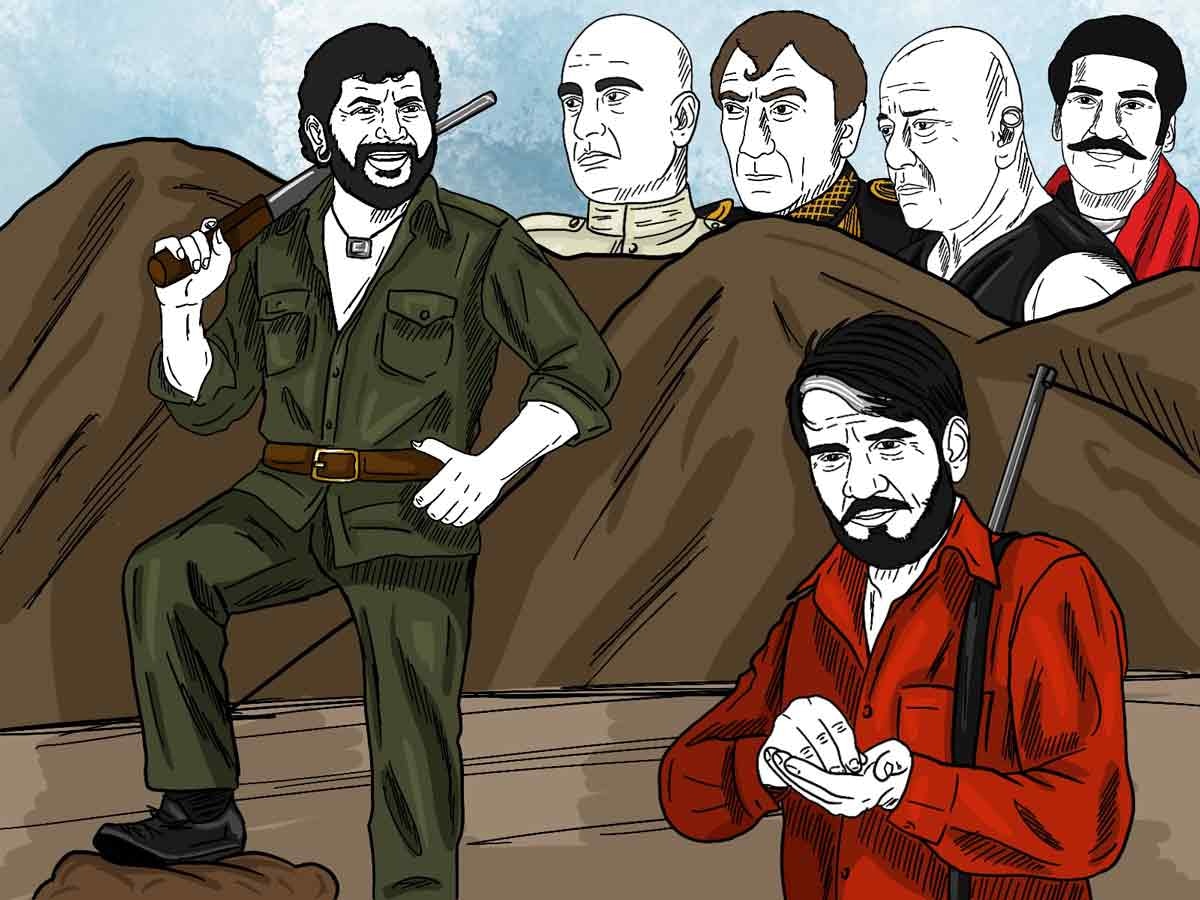
Bollywood’s Greatest Villain
Some years ago, Ram Gopal Verma remade Sholay. Acting on his desire to portray Gabbar, Amitabh Bachchan reprised Amjad’s role. Compared to the original, even the legendary Bachchan resembled a poor caricature. It proved one of the maxims of Indian cinema: There was, and there will be only one Gabbar Singh.
What made Gabbar Singh the greatest villain in Bollywood history? It wasn’t just Amjad’s performance, though his raw intensity was undeniable. It was the magic of Salim-Javed’s writing, Sippy’s vision, and Amjad’s ability to transcend the archetype of the Bollywood villain.
Great heroism demands a fitting rival. As Arthur Conan Doyle, the creator of Sherlock Holmes, argues, iconic villains are almost replicas of heroes, but on the darker side. In The Final Problem, Doyle describes Moriarty as “a genius, a philosopher, an abstract thinker” with a “mind of the first order.” At one point, Holmes confesses, “My horror at his crimes was lost in my admiration at his skill.”
Like Moriarty to Holmes, Gabbar matched Jai and Veeru’s wit and camaraderie with his own ruthless strategy and charisma. He was Jai and Veeru’s dark mirror whose cunning and bravado matched their own. That is why their conflict rose to the level of an epic.
Before Gabbar, villains were often one-dimensional, mostly Kanhaiyalal’s sly money lenders, Pran’s backstabbing, scheming landlords, Ajit’s suave smugglers or Prem Chopra’s cowardly molesters. Gabbar was different. He was a dacoit with a twisted sense of humour, a leader who ruled through fear yet charmed with his crude charisma.
His words, concise and philosophical, conveyed a twisted morality: cowardice had to be punished, vengeance was justified, greed wasn’t good—his men asked only for a palmful of grains—and women had to be savoured from a distance. “Arre o Sambha, kitna inaam rakhe hain sarkar hum par?” wasn’t just a question—it was a boast, a declaration of his infamy and invincibility.
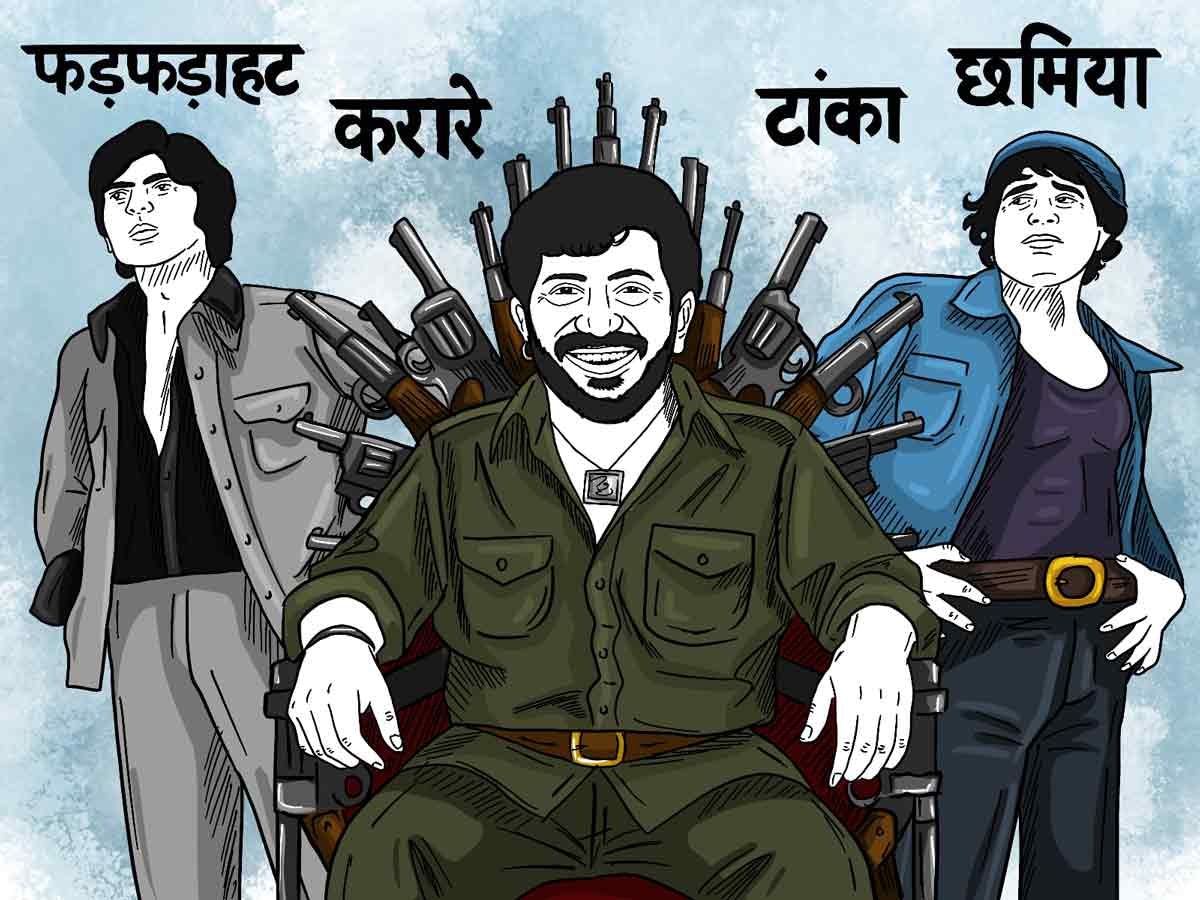
Gabbar wasn’t just evil, he was a living embodiment of the theory that absolute power corrupts absolutely. He killed loyal sidekicks for cowardice, innocent villagers, including a boy, like flies, and found pleasure in their pain. As Javed Akhtar recalled in a 2020 India Today interview, “Amjad brought a madness to Gabbar, a kind of joyous cruelty that made him unforgettable.”
Villainy as an art is waning in Indian cinema. After Gabbar, there have been just a handful of memorable characters that define madness and badness: Kulbhushan Kharbanda’s Shakaal (Shaan), Amrish Puri’s Mogambo (Mr India), Sanjay Dutt and Danny’s Kancha Cheena (Agneepath), and, this author’s favorite, Mukesh Rishi’s Billa Jilani (Gardish). All of them have shades of Gabbar—Mogambo, like Gabbar, is both loved and feared, Kancha Cheena is both suave and cruel, and Billa Jilani looms like a menace even before his arrival on the screen. Yet, they are just parts of Gabbar’s legacy, bits and pieces of his overarching character.
Gabbar burst on the screen 50 years ago. Even in 2025, he remains Bollywood’s greatest villain; a legend who lives on in every snarl, every quote, and every heart that raced with fear and joy at the sound of his name.
If you were to ask Sambha today, for how many more years Gabbar’s legend would live, the answer undoubtedly will be: “Poore pachaas hazaar.”
Next: The immortal characters of Sholay

